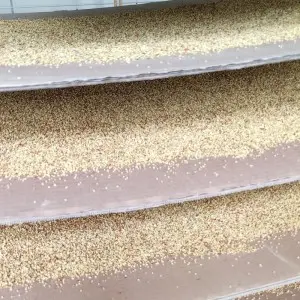Nov . 21, 2024 15:09 Back to list
do pear trees need auxiliary pollination
Do Pear Trees Need Auxiliary Pollination?
Pear trees (Pyrus) are cherished for their delicious fruit and beautiful blossoms. However, many aspiring gardeners and fruit growers often ask whether these trees require auxiliary pollination to produce fruit. Understanding pear tree pollination is essential for those looking to cultivate a healthy and productive orchard.
Pollination in Pear Trees
Pollination is the process by which pollen is transferred from the male parts of a flower to the female parts, allowing for fertilization and subsequent fruit development. Unlike some plants that can self-pollinate, many pear tree varieties are largely dependent on cross-pollination for optimal fruit production. This means that fruit set and quality improve when two or more different varieties of pear trees are grown in proximity.
Self-Pollinating vs. Cross-Pollinating Pear Trees
When considering the need for auxiliary pollination, it’s important to differentiate between self-pollinating and cross-pollinating species. Some pear varieties, like the 'Harrow Sweet' and 'Pineapple', are self-pollinating, which means they can produce fruit on their own without the need for pollen from another tree. However, even these varieties can benefit from cross-pollination, leading to better fruit set and larger, more flavorful pears.
On the other hand, many popular pear varieties, such as ‘Bartlett’ and ‘Bosc’, are not self-pollinating and require pollen from another variety to produce fruit. This makes it crucial for gardeners to plant more than one type of pear tree in their orchards for the best results. When these different varieties bloom simultaneously, they enhance the likelihood of successful pollination and fruit development.
Importance of Pollinators
In addition to planting compatible varieties, the role of pollinators such as bees cannot be overstated. Bees, especially honeybees and bumblebees, are particularly effective at pollinating pear trees. They visit the blossoms in search of nectar and inadvertently transfer pollen from one flower to another, facilitating cross-pollination.
do pear trees need auxiliary pollination

To attract pollinators, consider planting a diverse range of flowering plants in and around your orchard. This can provide a stable food source for bees, ensuring a healthy population that is ready to assist with pollination when your pear trees bloom.
Planting Tips for Successful Pollination
1. Choose Compatible Varieties If you are planting pear trees, opt for at least two different varieties that bloom around the same time. This increases the chances of cross-pollination. Research local resources or nursery catalogs that detail which varieties are best paired together.
2. Consider Spacing When planting your trees, make sure they are close enough to allow pollinators to easily transfer pollen between them, but ensure proper spacing for air circulation and sunlight exposure.
3. Check Bloom Times Timing is critical. Pear trees generally bloom in the spring, and various hybrids may have staggered blooming periods. Be sure to select varieties that have overlapping blooming periods for effective cross-pollination.
4. Maintain a Healthy Environment Provide a healthy growing environment by ensuring adequate water supply, well-draining soil, and regular fertilization. Healthy trees are more likely to produce abundant flowers and fruit.
5. Minimize Pesticide Use Many common pesticides are harmful to bees and other beneficial insects. If possible, limit or avoid pesticide application during the flowering period to protect these essential pollinators.
Conclusion
In conclusion, while some pear tree varieties may manage to set fruit without the assistance of another tree, the overwhelming majority benefit significantly from auxiliary pollination through cross-pollination. By planting compatible varieties and fostering a healthy habitat for pollinators, gardeners can ensure that their pear trees flourish and produce an abundant harvest. Understanding the intricacies of pollination is key to growing successful and fruitful pear trees, making it an essential factor for any aspiring horticulturist. With the right approach, a thriving pear orchard can be a reality for many gardening enthusiasts.
-
High-Quality Oak Pollen for Allergy Research & Testing – Reliable Oak Tree & Live Oak Pollen Supplier
NewsJul.08,2025
-
Premium Pear Pollen for Pollination in Orchards in Taiwan – Reliable Factories, Manufacturers & Suppliers
NewsJul.08,2025
-
Premium Pollen Producer & Apricot Pollen Suppliers High-Quality Apricot Pollen Factories
NewsJul.07,2025
-
Premium Juniper Tree Pollen for Fruit Tree Varieties – Quality Assured by Leading Plum Pollen Manufacturers
NewsJul.07,2025
-
High Quality Elm Pollen Supplier - Fresh Elm Tree & Apricot Flower Pollen for Sale
NewsJul.07,2025
-
Premium Cherry Pollen for Sale – Fresh Cherry & Avocado Tree Pollen Supplier
NewsJul.06,2025